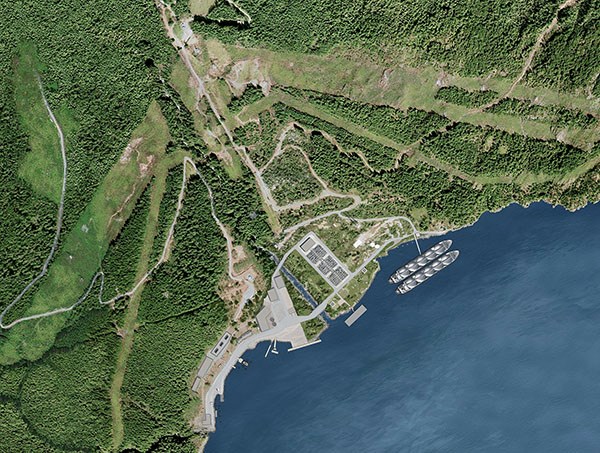This is the first in an ongoing series of Q&A columns provided by The Squamish Chief where experts are given the opportunity to answer questions asked by the community regarding liquified natural gas and related issues in light of the proposed Woodfibre LNG plant.
Email your questions or ideas to news@squamishchief.com.
This week, Capt. Fred Denning , president of B.C. Coast Pilots answers your questions:
What distance do marine pilots consider a narrow passage?
Narrow is a relative term, the channel width in Howe Sound is one nautical mile (1852m) with a very short section being one statute mile wide (1609m).
As ships that are being discussed for this project would be expected to be able to complete a 360 degree turn in under half a mile, unassisted, the available sea room of a one mile wide channel would be very adequate for transiting this area.
How many tugs usually accompany LNG carriers?
Depending on the class (size) of carrier used it would be expected that a minimum of two tugs and up to four (depending on their power and design) for the larger ships would be used in the vicinity of the terminal. Requirements (if any) for tug escort in transit have not yet been defined.
What are, if any, the challenges around guiding LNG carriers?
LNG carriers are normally similar to container ships and cruise ships that we have had in this area for many years.
What is a safe speed for LNG carriers to travel when entering a terminal?
Berthing speeds tend to be quite low, less than two knots on final approach. Transit speeds will vary depending on ships characteristics, escort tug requirements, other marine traffic, prevailing environmental conditions, etc.
What challenges, if any, does Howe Sound present?
As with many areas on the B.C. coast, local traffic, prevailing weather and visibility and ships characteristics need to be kept in mind while transiting the area.
How does wind play into a marine pilots’ job?
As with most of the marine environment on the B.C. coast, a prudent pilot will be aware of prevailing and forecast conditions while transiting coastal waters.
Strong winds are common, particularly in winter, in many areas of the coast and can constitute a significant consideration when planning a passage.
When approaching a terminal at slow speed, the power of the assist tugs will dictate if safe berthing is possible under prevailing conditions.
What do marine pilots consider as a strong wind?
The effect of wind on a particular vessel will be a function of ship design, draft and manoeuvring characteristics.
Would a ship ever stay out at sea if conditions are challenging?
Yes. Marine pilots will only transit and berth vessels if the conditions are within acceptable parameters and safe. A pilot can request that a ship remain at sea if conditions exceed safe limits.
The ship can then come back in when conditions moderate.
How will waves created by LNG carriers affect the shoreline?
The impact of waves would normally be assessed in a specific study conducted by independent, third party consultants.
Woodfibre officials are proposing to add approximately 40 carriers to Howe Sound per year. How will LNG carriers entering Howe Sound affect ocean traffic?
Forty ships a year equates to one ship approximately every 9 days. With recent traffic on the B.C. coast at about 12,500 assignments per year, 40 ships would not be a significant increase in shipping traffic overall.
How do recreational vessels and activities affect marine pilots’ jobs?
Pilots encounter recreational vessels all along the B.C. coast, with the largest concentrations being in the Vancouver area, Boundary and Haro Straits and off Victoria. All users of B.C.’s marine waterways must act in a responsible manner to ensure that rules and regulations are followed to avoid accidents.
What do you think residents should consider when exploring the Woodfibre proposal?
From a marine operations perspective, marine pilots will ensure that vessels in Howe Sound will transit safely, with minimal impact on the surrounding environment. The B.C. Coast Pilots will adhere to the specific risk mitigation required, yet to be determined by regulators.
Born and raised in Prince Rupert, currently residing on Vancouver Island, Capt. Denning has been a Licensed B.C. Coast Pilot since 1990. Before becoming a pilot he was employed in the marine industry on this coast since 1969, for a total of 45 years serving on the west coast.




